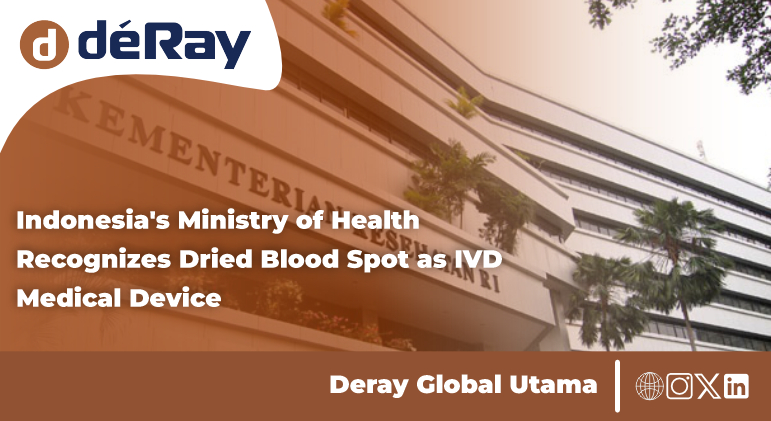- Home
- About Us
- Products & Services
- Our Services
- License Representative
- Product Registration
- Medical Device Company Establishment Service
- Renewal and License Amendment
- Miscellaneous Certificates
- Post-Marketing Surveillance
- E- Catalogue
- Medical Device Trademark Management
- GDPMD (Good Distribution Practice for Medical Device)
- Regulatory Intelligence
- research material products
- Our Services
- Articel
- Asia Regulatory Information
- Our Clients
- Gallery
- Contact US

Regulatory Update: Wireless Medical Devices
The advancement of wireless technology has ushered in a new era for medical devices, enhancing the quality of life for patients with various diseases. Modern medical devices have become smaller, more portable, and have evolved from simple forms to complex systems for diagnostics, monitoring, and treatment. This shift not only offers numerous advantages over traditional, larger medical devices but also reduces costs and improves convenience for healthcare providers. However, the emergence of wireless medical devices raises new concerns, particularly regarding security vulnerabilities that could be exploited by malicious hackers. This update will discuss the advantages and disadvantages of wireless healthcare tools and evaluate the diversity and severity of associated security threats.
Advantages of Wireless Medical Devices
The integration of electronic technology with low power consumption and high performance has made wireless medical devices feasible in previously inaccessible markets, particularly in healthcare. Leading research institutes and companies are developing micro-sized, ultra-thin, flexible, and biocompatible electronics. This innovation is enabling the creation of wearable and implantable biomedical devices that maintain functionality while minimizing patient discomfort and reducing costs for healthcare providers.
A crucial aspect of this new era in health technology is the ability to communicate with minimal power consumption and to operate remotely, allowing for remote data access. Bluetooth has introduced a platform called Bluetooth Low Energy (BLE), designed to facilitate wireless communication with low power metrics and minimal costs without compromising performance compared to other wireless standards.
Disadvantages of Wireless Medical Devices
While wireless medical devices significantly reduce the burden of hospital visits and lower treatment costs for both patients and healthcare facilities, they also introduce security risks. The transmission of data over wireless networks creates vulnerabilities, allowing malicious hackers to potentially breach network security and access confidential patient information. Hackers may hijack device operations to steal personal information or damage devices. To mitigate these risks, it is essential to implement security measures such as wireless encryption, data access control, and password confidentiality.
Regulation of Wireless Medical Devices in Indonesia
In Indonesia, registering wireless medical devices requires obtaining a telecommunication equipment certificate from the Directorate General of SDPPI. Applications can be submitted by brand owners who are Indonesian legal entities, appointed distributors for foreign brand owners, or local manufacturers of telecommunication equipment.
Before applying for a telecommunication equipment certificate, registrants must create an OSS account. Once registered, they can log in, select the appropriate commitment for telecommunication equipment certification, and obtain a Nomor Induk Berusaha (NIB). After securing the NIB, applicants need to register an account through the KOMINFO service website. They then log in to the DITJEN SDPPI website using their registered account to input their NIB and complete the required documentation for PLG ID registration. Upon verification of these documents, applicants receive a PLG.ID, which they then use to complete the registration process. For a comprehensive overview of the certification procedure, visit the e-Certification section at postel.go.id.
Requirements for Telecommunication Equipment Certification
To obtain a telecommunication equipment certificate, several requirements must be met. For new applications, a test result report and various technical specification documents are necessary. For applications seeking changes to existing certificates, the original SDPPI certificate must be provided. Additional information can be found at postel.go.id.
Certification fees are categorized based on the source of the attached test result report. A fee of IDR 7,000,000 (seven million rupiah) is charged for reports issued by domestic testing centers, while a fee of IDR 50,000,000 (fifty million rupiah) applies for reports from overseas centers. The test result report remains valid for the certification process as long as the technical reference used in the test has not changed.
Applicants must complete payment within five working days after the certification is issued to avoid revocation or invalidation of the certificate, in which case they would need to restart the application process.
Artikel Lainnya
-

Obligation to Submit Internal Audit Reports for Medical Device Companies Holding GDPMD Certificates
-

Udpate List of Medical Device and PKRT Testing Laboratory Network Accredited by SNI ISO/IEC 17025:2017
-

Indonesia's Ministry of Health Recognizes Dried Blood Spot as IVD Medical Device
-

GDPMD and Impact on Medical Device Registration in Indonesia
-

Transition from Waarmerking to Notarial Deed: New Agreement Validation for PJT and Companies in Medical Device Distribution
Our Services
- License Representative
- Product Registration
- Medical Device Company Establishment Service
- Renewal and License Amendment
- Miscellaneous Certificates
- Post-Marketing Surveillance
- E- Catalogue
- Medical Device Trademark Management
- GDPMD (Good Distribution Practice for Medical Device)
- Regulatory Intelligence
- IDAK (Izin Distributor Alat Kesehatan)